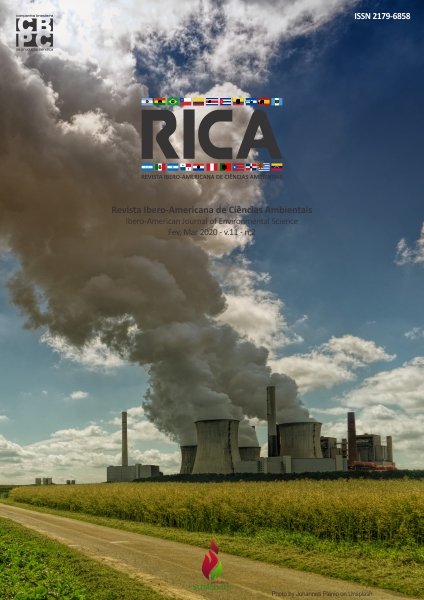Simplified method to estimate the wetted bulb dimensions in surface drip irrigation
DOI:
https://doi.org/10.6008/CBPC2179-6858.2020.002.0006Keywords:
Soil and Water Modeling, Soil Water Infiltration, Localized IrrigationAbstract
The knowledge of the dimensions of the wetted soil surface in drip irrigation is an important aspect that causes the attention of researchers because it defines filtration and irrigation frequency, as well as the number of emitters and system design. For this many models have been used in different studies, highlighting the potential model and response surface to estimate the dimensions of the bulb on the experimental conditions in relation to the emitter discharged and time of water application. Accordingly, the aim of this work was propose, adjust and evaluate mathematical models to estimate the maximum diameter (Dmax), maximum depth (Zmax) and surface diameter (Ds) using the wet bulb volume of 1.0 L of water. For six experiments that were installed in different soils and evaluated the size of the bulb due to the volume of water applied. Three models were proposed, and the values ​​of Dmax, Zmax and Ds for applying 1.0 L of water. It was concluded that the models satisfactorily estimated dimensions assessed, with a coefficient of determination (R2) between observed and estimated values ​​ranging from 0.9615 to 0.9896, 0.9212 to 0.9835 and from 0.8904 to 0.9704 to Dmax, Zmax and Ds, respectively.
Downloads
Downloads
Published
Issue
Section
License
The CBPC - Companhia Brasileira de Produção Científica (Brazil CNPJ: 11.221.422/0001-03) the material rights of the published works. The rights relate to the publication of the work anywhere in the world, including rights to renewals, expansions and dissemination of the contribution, as well as other subsidiary rights. All electronically published works may subsequently be published in printed collections under the coordination of this company and / or its partners. The authors preserve the copyright, but are not allowed to publish the contribution in another medium, printed or digital, in Portuguese or in translation.









